Physical Address
304 North Cardinal St.
Dorchester Center, MA 02124
Physical Address
304 North Cardinal St.
Dorchester Center, MA 02124
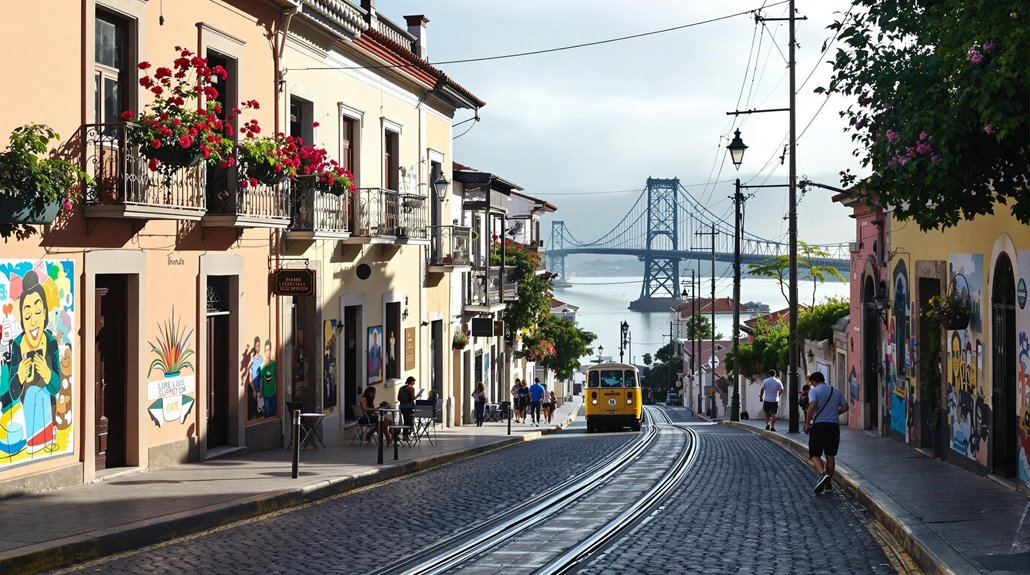
Lima's vibrant Barranco district blends historic mansions with cutting-edge art, food, and culture to create Peru's most captivating neighborhood.
You will discover it hard not to fall in love with Barranco, Lima’s most enchanting neighborhood. This seaside district has transformed from a 19th-century beach resort into Peru’s creative heartbeat, where art galleries share streets with craft breweries and historic mansions house cutting-edge restaurants. Whether you’re drawn to lively street murals, innovative cuisine, or Pacific Ocean sunsets, Barranco offers compelling reasons to explore its charming corners. Let’s discover what makes this bohemian enclave so irresistible.
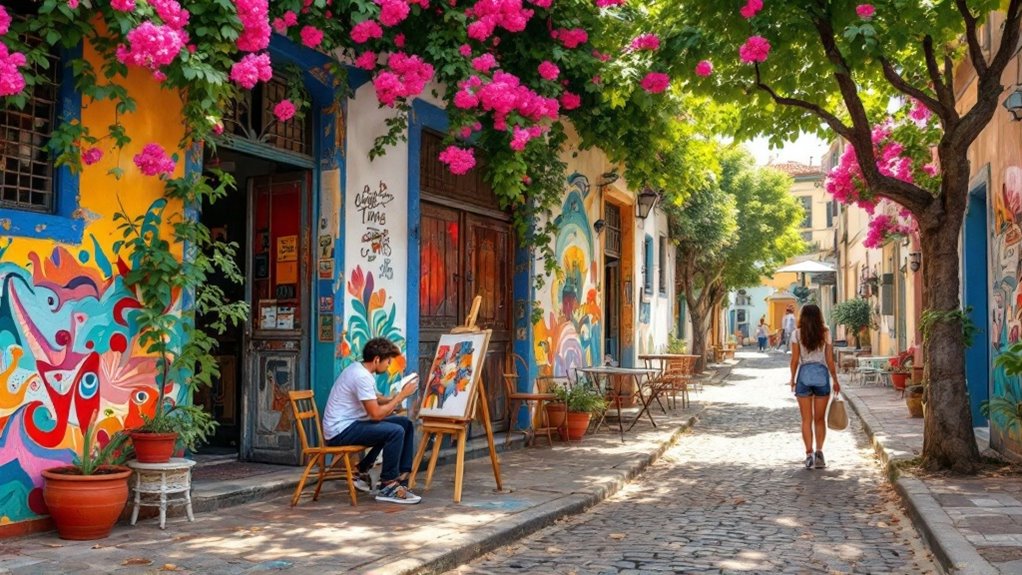
While many neighborhoods in Lima boast cultural attractions, Barranco distinguishes itself as the city’s premier artistic hub, with over 20 galleries and museums packed into its historic streets.
You’ll find world-class institutions like MAC Lima showcasing Latin American contemporary art from 1950 onwards, and MATE museum, where Mario Testino’s photography meets traditional Peruvian portraits in a stunning 19th-century mansion.
For viceregal art enthusiasts, the Pedro de Osma Museum displays masterpieces from the Cusco School.
Street art adds lively energy to the district, with Jade Rivera’s magical realism murals near the Puente de los Suspiros bridge and dozens of politically charged works by the Ruta Mare Collective.
Barranco’s vibrant walls showcase Rivera’s dreamlike murals and the Ruta Mare Collective’s bold political statements, energizing Lima’s artistic soul.
Don’t miss the annual Muraliza el Barrio Festival, which adds 15+ new murals each year, transforming Barranco’s walls into an ever-evolving outdoor gallery.
As centuries of architectural evolution unfold before your eyes, Barranco’s streetscape tells a compelling story of Lima’s past and present.
You’ll uncover the 16th-century Casa Aliaga, continuously inhabited by the same family since Spanish conquest, alongside the stunning Quinta de Presa with its unique blend of Baroque, Moorish, and Art Nouveau elements.
The neighborhood’s commitment to preservation shines through its strict two-floor height limits and $2.3M annual restoration grants. The district’s vibrant art scene has transformed it into Lima’s most culturally rich neighborhood.
You’ll encounter clever adaptive reuse everywhere – from the French Art Nouveau Casa Bielich, now a boutique hostel, to 17th-century mills transformed into trendy breweries. A prime example is the Casa Rosell-Rios, beautifully restored in 2020 to serve as the eclectic Kokopelli Hostel.
While modern elements like solar panels and glass buildings dot the landscape, they’re thoughtfully integrated to preserve Barranco’s historic charm, where over 60% of mansions still showcase their original wood balconies and Andalusian tiles.
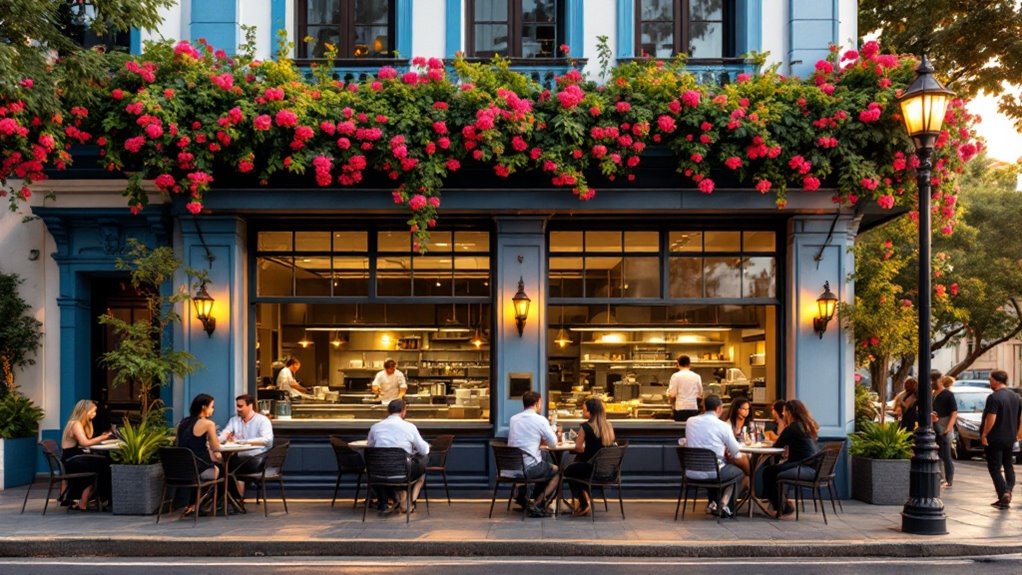
Barranco’s architectural heritage provides the perfect backdrop for Peru’s most exciting culinary movement.
You’ll encounter Chef Virgilio Martínez‘s innovative test kitchen experimenting with hyper-local ingredients, while venues like Mérito blend Venezuelan and Peruvian flavors in exciting new ways.
You can explore Peru’s diverse gastronomy at every price point. From $2 street snacks at Surquillo Market to $150 tasting menus at high-end restaurants, there’s something for every budget. The period from January to March is the best time to visit, offering the freshest seafood and produce at markets.
Don’t miss the January food festivals where family-run stalls serve alongside avant-garde pop-ups.
What makes Barranco’s food scene truly special is how it honors tradition while embracing innovation.
You’ll uncover ancient cooking techniques like Pachamanca earth-oven cooking alongside modern Nikkei cuisine that fuses Japanese and Peruvian flavors.
Digital payments make it easy to sample everything from street food to fine dining.
Lively murals transform nearly every available wall in Barranco into an open-air gallery, with over 60 new works added each year through festivals and contests.
You’ll encounter dynamic artwork everywhere you turn, from the tunnel beneath Parque Federico Villarreal to the ocean-facing cliffs along Bajada de los Baños.
The district’s art scene gained even more momentum after 2015, when artists united to restore over 60 destroyed murals.
Today, you’ll find an incredible mix of styles: Andean spiritual motifs blend with modern surrealism, while political commentary shares space with whimsical marine life scenes.
Don’t miss the typographic murals featuring Quechua poetry by Elliot Tupac or the dreamlike figures by Jade Rivera.
Thanks to local initiatives like “Muraliza el Barrio,” Barranco’s street art continues to evolve and thrive.
This cultural hub of Lima attracts both local and international artists who contribute to the neighborhood’s creative identity through their unique murals.
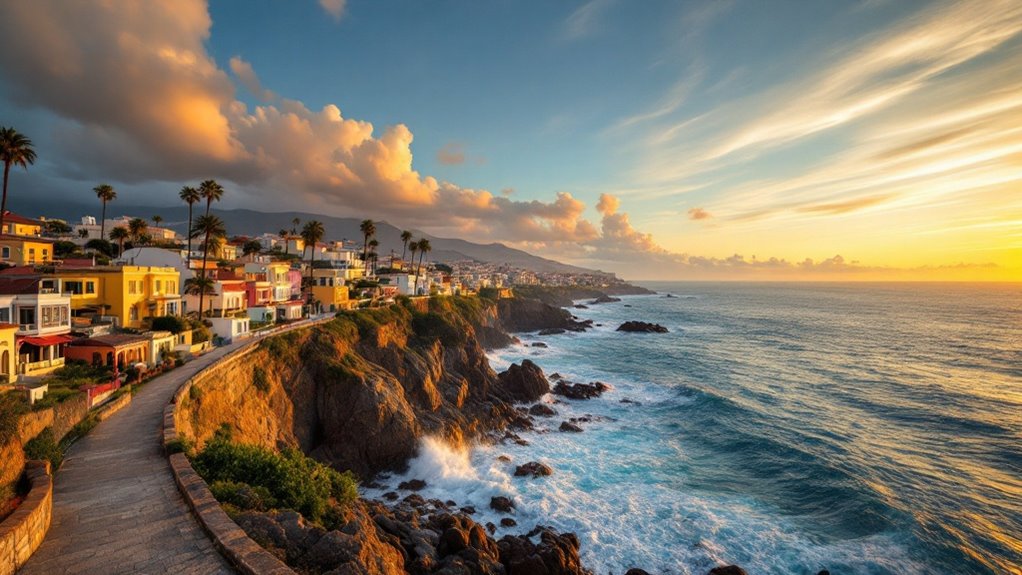
Dramatic cliffs along Lima’s coastline provide Barranco with some of the city’s most spectacular ocean views.
You’ll discover the best vantage points along the Malecón de Barranco, where pedestrian paths and bike lanes hug the clifftops. The historic Bajada de los Baños leads you down cobblestone steps to the beach, while the romantic Puente de los Suspiros offers breezy ocean outlooks. The Mirador Catalina Ravon provides stunning panoramic views of both the ravine and Pacific waters below.
Here’s what makes Barranco’s ocean views unforgettable:
For the ultimate experience, book a stay at one of the boutique hotels with private Pacific-facing terraces.
Tucked along Barranco’s historic streets, more than two dozen artisanal boutiques showcase Peru’s finest handcrafted treasures.
You’ll discover Dédalo Arte y Artesanía in a stunning 19th-century mansion, where 15+ vendors display their unique creations. At Las Pallas, you can browse traditional folk art, from intricate textiles to detailed wood carvings. The nearby organic food market offers locally-sourced artisanal products and fresh produce from regional farmers.
For fashion enthusiasts, La Zapatería offers bespoke leather footwear, while Escudo Boutique features luxurious alpaca garments that blend traditional and contemporary styles.
If you’re looking for authentic souvenirs, head to Mercado Indio’s stalls for handcrafted jewelry and pottery at negotiable prices. For the best deals, consider visiting during weekday mornings when the crowds are thinner.
Don’t miss UNØ, where urban streetwear meets ancestral Peruvian motifs, reflecting Lima’s evolving design scene.
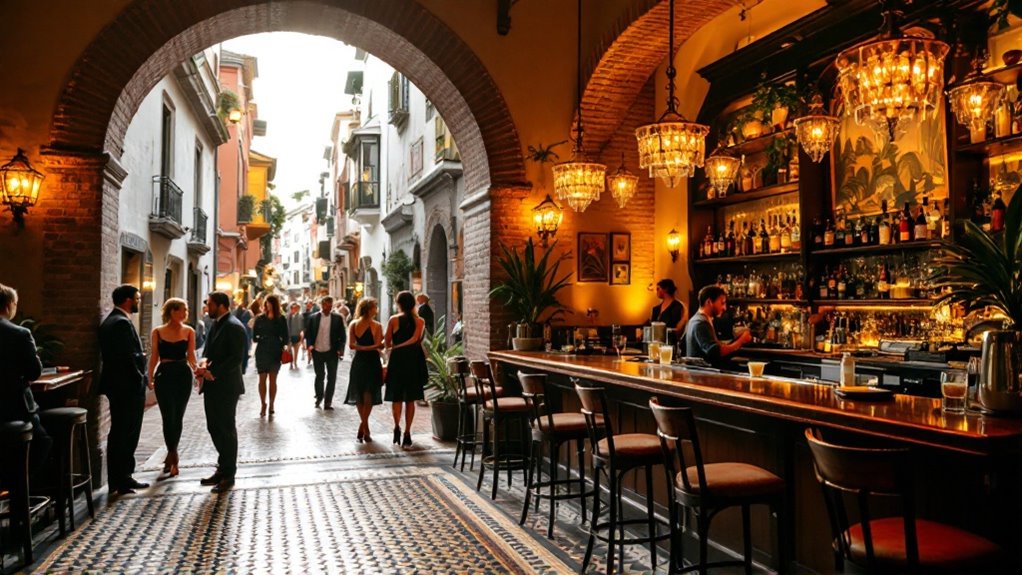
As the sun sets over Lima’s coast, Barranco’s historic mansions transform into some of the city’s most enchanting nightlife venues.
You’ll discover 19th-century estates and Belle Époque buildings cleverly repurposed into multi-level clubs, cocktail lounges, and live music venues. Each space tells its own story, from Ayahuasca’s Amazonian-themed rooms to Victoria Bar’s colonial cellar where you can pair pisco cocktails with fresh ceviche. Hotel B’s elegant bars offer refined cocktail experiences in their rooftop venue.
Here’s what makes Barranco’s nightlife truly special:
Whether you’re into DJ sets, live jazz, or traditional vals criollo, these historic venues offer an unforgettable night out.
Barranco’s artistic soul pulses through its network of galleries, museums, and street art, making it Lima’s undisputed creative capital. You will encounter independent spaces like Jade Rivera Museum and Wu Gallery showcasing emerging Peruvian talent in converted mansions, while the Pedro de Osma Museum houses incredible viceregal art in a neo-baroque setting. The neighborhood’s artisanal spirit extends to local chocolate making workshops, where visitors can learn traditional Peruvian techniques.
The creativity spills onto the streets, where over half of Barranco’s walls feature rotating murals. Along Calle San Lorenzo and Bajada de Baños, you will come across artwork blending social themes with Inca legends. The Museum of Contemporary Art of Lima serves as the epicenter of art scene in Barranco. Don’t miss the annual Art Lima | Gallery Weekend, where 100+ exhibitors transform the neighborhood into a cultural festival. For hands-on experience, join workshops at Edith Sachs Artes Visuales or catch live mural-painting demonstrations under the bridges near Parque Federico Villarreal.
You’ll discover that Barranco isn’t just Lima’s trendiest neighborhood – it’s a lively fusion of art, culture, and history that captures your heart. Whether you’re gallery-hopping, savoring innovative cuisine, or watching the sunset from the Malecón, this bohemian district offers an authentic slice of modern Peru. Don’t miss experiencing this creative hub where tradition and contemporary culture blend seamlessly in South America’s most exciting neighborhood.